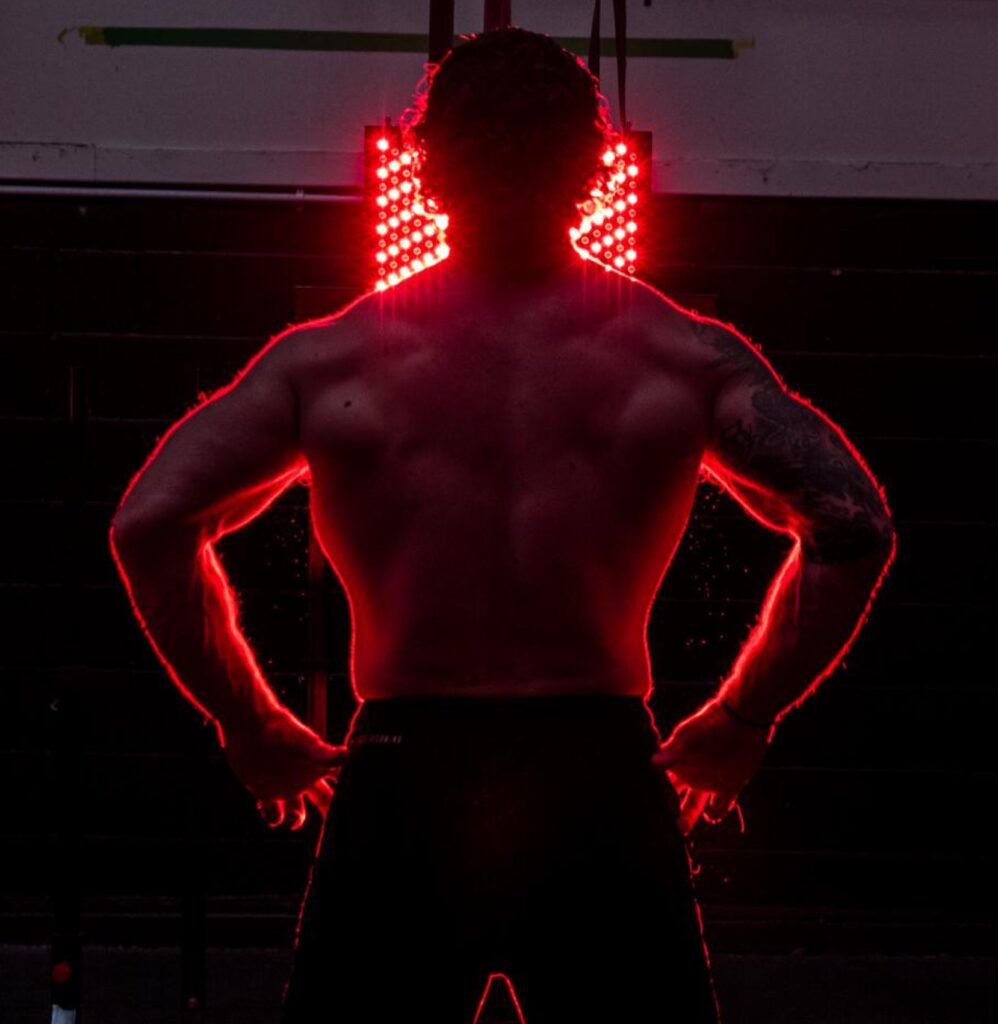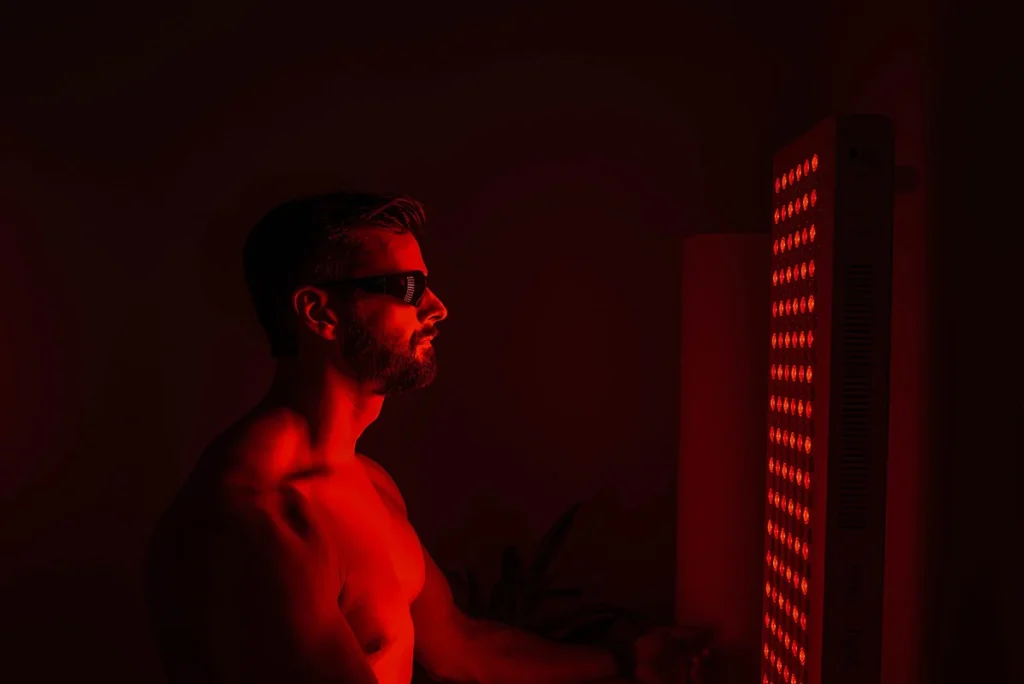Red light therapy has gained significant attention in recent years. Also known as low-level laser therapy (LLLT) or photobiomodulation, this non-invasive treatment has shown promising results in enhancing various aspects of health. From reducing inflammation and pain to promoting skin rejuvenation, the benefits of red light therapy are diverse and intriguing. In this article, we’ll explore the science behind red light therapy and how it can be a game-changer for improving your overall well-being.
Understanding Red Light Therapy
Red light therapy involves exposing the body to low levels of red or near-infrared light. This light penetrates the skin and stimulates cellular function, leading to a range of therapeutic effects. The wavelengths used in red light therapy typically range from 620 to 750 nanometers, with near-infrared light falling between 750 and 1,200 nanometers.
The mechanism behind red light therapy lies in its ability to enhance cellular energy production. Mitochondria, the energy powerhouses of our cells, are believed to absorb these specific wavelengths of light, kickstarting a series of biochemical reactions that promote increased adenosine triphosphate (ATP) production. ATP is a crucial molecule that provides energy for cellular processes, and its boost can have profound implications for various bodily functions.

Inflammation and Pain Reduction
One of the most well-established benefits of red light therapy is its anti-inflammatory and analgesic (pain-relieving) effects. Chronic inflammation is associated with a myriad of health issues, ranging from arthritis to cardiovascular diseases. By modulating inflammatory responses at the cellular level, red light therapy has been shown to alleviate pain and reduce inflammation in various conditions.
Studies have demonstrated the efficacy of red light therapy in managing joint disorders such as osteoarthritis and rheumatoid arthritis. The light wavelengths penetrate deep into the joints, promoting cellular repair and reducing inflammation. This can lead to improved joint function and a decrease in pain, providing a non-pharmacological option for individuals seeking relief.
Enhanced Muscle Recovery and Performance
There’s a growing mountain of evidence showing red light therapy’s positive effects on anaerobic performance and workout recovery. Red light therapy has been shown to accelerate the recovery process by promoting the repair of damaged muscle tissue and reducing inflammation.
One study published in the American Journal of Physical Medicine & Rehabilitation found that red light therapy significantly reduced muscle soreness and improved muscular performance in athletes after exhaustive exercise. This enhanced recovery can allow individuals to train more consistently and achieve better training outcomes, something any fitness enthusiast should be excited about.
Skin Health and Rejuvenation
Beyond its applications for pain and inflammation, red light therapy has gained popularity for its positive effects on skin health and rejuvenation. The light wavelengths stimulate collagen production, a key protein responsible for maintaining the skin’s elasticity and firmness. Increased collagen production can lead to smoother, more youthful-looking skin.
Research has shown that red light therapy can be effective in treating various skin conditions, including acne, psoriasis, and dermatitis. The anti-inflammatory properties of the therapy contribute to a reduction in redness and irritation, while the stimulation of collagen helps in the healing and regeneration of skin cells.

Improved Mood Disorders and Sleep
The potential of red light therapy extends beyond physical health to mental well-being. Exposure to red light has been shown to have positive effects on mood and sleep patterns. The light wavelengths influence the production of serotonin, a neurotransmitter associated with mood regulation, and melatonin, a hormone that plays a crucial role in sleep-wake cycles.
For individuals struggling with mood disorders such as depression or anxiety, incorporating red light therapy into their routine may offer a non-invasive and adjunctive approach to treatment. Additionally, using red light therapy before bedtime has been reported to improve sleep quality by promoting the natural circadian rhythm.
Supporting Cognitive Function
Emerging research suggests that red light therapy may have neuroprotective effects, potentially supporting cognitive function and mitigating the effects of neurodegenerative diseases. The wavelengths of red and near-infrared light can penetrate the skull and reach the brain, where they enhance mitochondrial function, increase cerebral blood flow, and promote the production of neurotrophic factors.
While more research is needed in this area, early studies have shown promising results. A review published in the Journal of Photochemistry and Photobiology Biology highlighted the potential of red light therapy in improving cognitive function and reducing the risk of neurodegenerative disorders.
Practical Applications of Red Light Therapy
Red light therapy can be administered in various ways, making it accessible and convenient for individuals seeking its benefits. The most common methods include:
- Light Panels: These are the most common and are designed for targeted exposure for large areas of the body.
- Whole-Body Therapy Beds: These beds provide a more comprehensive approach, exposing the entire body to red or near-infrared light.
- Facial Masks: These facial masks are designed to improve skin health and reduce signs of aging on the face. They are popular in the beauty and skincare industry.
- Handheld Devices: Compact and versatile handheld devices are available for individuals to use on specific body parts or areas of concern.
There aren’t hard guidelines for duration and frequency of use, but most red light manufacturers recommend 10-20 minutes per area and 3-6 days per week depending on the device.

Safety Considerations
Another plus in favor of red light therapy is its excellent safety profile. Generally speaking, it’s perfectly safe for most people. However, there are some considerations for specific conditions, such as pregnancy and light sensitivity.
As with any new health intervention you implement, it’s important to follow guidelines provided by manufacturers and your healthcare professional to ensure safe and effective use.
Conclusion
Red light therapy represents a fascinating frontier in the realm of health and wellness, offering a non-invasive and versatile approach to addressing various conditions. From reducing inflammation and pain to promoting skin rejuvenation and supporting mental well-being, the potential benefits of red light therapy are vast.
As research in this field continues to expand, we can expect to uncover even more applications for red light therapy and refine its protocols for optimal results. Whether you’re an athlete looking to enhance recovery, someone seeking relief from chronic pain, or an individual interested in promoting overall well-being, red light therapy may hold the key to unlocking a healthier and more vibrant life. As with any emerging therapy, staying informed with the latest research will be crucial in maximizing the benefits while ensuring safety and effectiveness.






